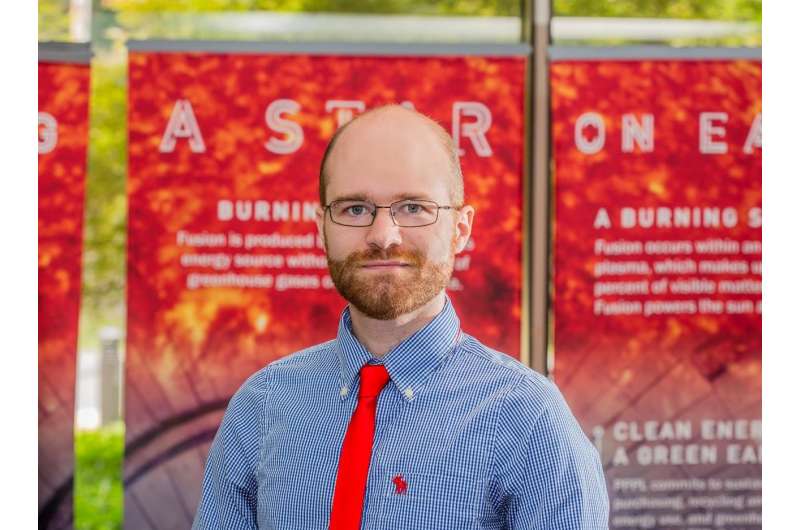Feathering the plasma nest: Tiny structures help prevent short circuits in plasma devices

Physicists at the Princeton Plasma Physics Laboratory (PPPL) have found a way to prevent plasma—the hot, charged state of matter composed of free electrons and atomic nuclei—from causing short circuits in machines such as spacecraft thrusters, radar amplifiers, and particle accelerators. In findings published online in the Journal of Applied Physics, Charles Swanson and Igor Kaganovich report that applying microscopic structures that resemble feathers and whiskers to the surfaces inside these machines keeps them operating at peak performance.
The physicists calculated that tiny fibers called "fractals," because they look the same when viewed at different scales, can trap electrons dislodged from the interior surfaces by other electrons zooming in from the plasma. Researchers refer to the dislodged surface electrons as "secondary electron emissions" (SEE); trapping them prevents such particles from causing electric current that interferes with the functions of machines.
Building on previous experiments
This work builds on previous experiments showing that surfaces with fibered textures can reduce the amount of secondary electron emission. Past research has indicated that surfaces with plain fibers called "velvet" that lack feather-like branches can prevent about 50 percent of the secondary electrons from escaping into the plasma. The velvet only traps half of such electrons, since if the electrons from the plasma strike the fibers at a shallow angle the secondary electrons can bounce away without obstruction.
"When we looked at velvet, we observed that it didn't suppress SEE from shallowly incident electrons well," Swanson said. "So we added another set of fibers to suppress the remaining secondary electrons and the fractal approach does appear to work nicely."
The new research shows that feathered fibers can capture secondary electrons produced by the electrons that approach from a shallow angle. As a result, the fractal fibers can reduce secondary electron emission by up to 80 percent.
Swanson and Kaganovich verified the findings by performing computer calculations that compared velvet and fractal feathered textures. "We numerically simulated the emission of secondary electrons, initializing many particles and allowing them to follow ballistic, straight-line trajectories until they interacted with the surface," Swanson said. "It was apparent that adding whiskers to the sides of the primary whiskers reduced the secondary electron yield dramatically."
Provisional patent
The two scientists now have a provisional patent on the feathered-texture technique. This research was funded by the Air Force Office of Scientific Research, and follows similar experimental work done at PPPL by other physicists. Specifically, Yevgeny Raitses, working at PPPL; Marlene Patino, a graduate student at the University of California, Los Angeles; and Angela Capece, a professor at the College of New Jersey, have in the past year published experimental findings on how secondary electron emission is affected by different wall materials and structures, based on research they did at PPPL.
More information: J.R.M. Vaughan, Multipactor, IEEE Transactions on Electron Devices (2002). DOI: 10.1109/16.3387
Journal information: Journal of Applied Physics
Provided by Princeton Plasma Physics Laboratory




















